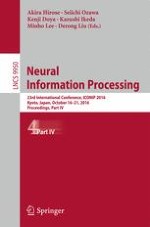2016 | OriginalPaper | Chapter
Solving the Vanishing Information Problem with Repeated Potential Mutual Information Maximization
Author : Ryotaro Kamimura
Published in: Neural Information Processing
Publisher: Springer International Publishing
Activate our intelligent search to find suitable subject content or patents.
Select sections of text to find matching patents with Artificial Intelligence. powered by
Select sections of text to find additional relevant content using AI-assisted search. powered by
